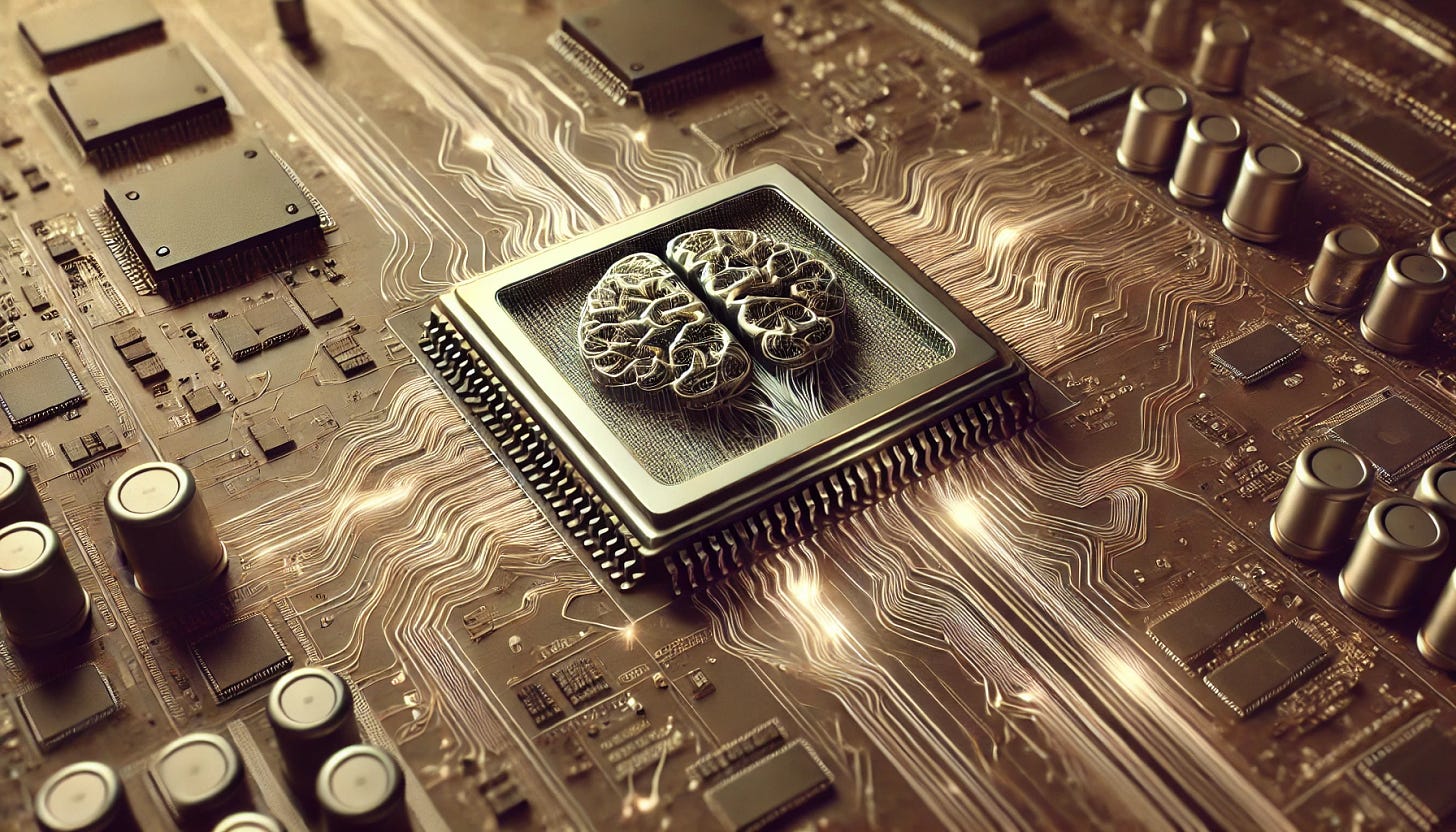The next computing revolution will not come from faster digital processors or more memory, it will come from machines that literally think differently. Neuromorphic processors, inspired by the brain's neural networks are starting to emerge with the potential to address artificial intelligence capabilities that current digital systems cannot.
The neuromorphic market is fragmented and immature, but innovation and experimentation continue across academia, start ups, and a small number of major players - like Intel and IBM.
There is a long way to go, but if just a fraction of the funds poured into the LLM companies had been allocated to neuromorphic development we would probably be in a much better place. It’s possible to spot significant applications for neuromorphic processors that are real and not too far out of reach.
In a previous post, I discussed the key elements of a neuromorphic computer system. Here I expand on neuromorphic processor developments.
Neuromorphic - A Brief Reminder
Why should we be interested in Neuromorphic computing? In short, order of magnitude improvements in speed, power efficiency and processing capability. The aim is to mimic the structure and functionality of biological neurons and synapses. Immediate applications involve sensing, processing, categorising and understanding real-world environments, then taking appropriate action.
Processor Technologies
There are four main technological approaches to building neuromorphic processors, they are:
Analogue
Digital
Hybrid
Photonic
Different approaches to constructing neuromorphic computing elements primarily differ in how neuron and synapse functionalities are implemented
Analogue: Rather than use discrete digital signals, analogue neuromorphic processors function based on continuous analogue voltages and currents. They use transistors, capacitors and memristors for the neuron and synapse functions.
The pure analogue approach closely emulates the function of neurons and synapses in the human brain and delivers fast processing, smooth operation and very low power performance.
Unfortunately, manufacturing variability, scalability issues and noise sensitivity mean there are no truly analogue neuromorphic processors available today.
Digital: While pure analogue chips are low power and mimic the functions of the human brain at a small scale, their limitations mean spike-based digital communication is a better option.
Digital implementations discretise signals and neuron spikes as binary events. Neurons are modelled using digital logic gates or processors executing simplified neuron models. Synapses are implemented using digital memory cells or lookup tables with synaptic strength adjustments via digital memory updates.
Digital implementations are more robust, and noise-resistant than analogue. Manufacturing is scalable and repeatable and can be implemented using existing semiconductor technology. However, this comes at the expense of higher energy consumption compared to pure analogue systems.
Hybrid: As the name suggests are a combination of digital and analogue circuitry, each optimised for particular functionalities or energy efficiency. Hybrid technology leverages the advantages of analogue and digital circuits.
Hybrid processors either use digital neurons with analogue or emerging memory-based synapses, or analogue neurons with digital synapses. Either way, the integration of analogue and digital elements is challenging.
Photonic: Photonic neuromorphic processors aim to exploit light's advantages (speed, bandwidth, energy efficiency). They combine photonic (light-based) hardware with neuromorphic (brain-inspired) computing architectures.
Photonic neuromorphic processors are analogue and use optical components (lasers, waveguides, photodetectors, phase-change photonics) to emulate neurons and synapses.
There are many challenges to overcome and Photonic neuromorphic processors are still at the research stage. Fabrication is complex and scalability is limited. Light-based memory systems are in the very early stages of development, plus current learning algorithms are designed for electronic systems not photonic.
Key Players
Classification of processors into a single category is not straightforward, but I will try.
Intel and IBM aside (see below) many of the Neuromorphic processor companies are relatively new. Major semiconductor companies including Samsung and AMD have, to date, not announced any neuromorphic processor developments.
Analogue Neuromorphic Processor developers by category:
Analogue:
None
Digital :
BrainChip - Akida
Intel - Loihi
IBM - TrueNorth/NorthPole
GRAI Matter Labs (acquired by SNAP) - GRAI VIP
Synsense - Speck/Dynap
Hybrid:
Stanford University - Neurogrid
Heidelberg University - Brainscales
HRL Laboratories (DARPA) - Surfrider
Innatera Microsystems - Pulsar
Synsence - Xylo
Photonic:
None
Some of the above are research projects (examples Neurogrid and Brainscales), some are black projects (or at least grey) like HRL Laboratories. Some (examples TrueNorth and Dynap) are/were internal technology demonstrators and were never commercialised.
Projects like SpiNNaker at the University of Manchester are not listed as they are networks rather than individual chips. There are companies (example - Conscium) that are in stealth mode. The market is fragmented and the above should not be taken as a definitive list.
Many companies produce elements of neuromorphic processors, provide research only, develop I.P, or design algorithms and are not discussed above.
Commercialised Devices
Most of the neuromorphic processors listed above are not commercially available. The only exception is Akida.
Loihi may be available to specific Intel partners for joint development while Pulsar, Xylo and Speck are available in prototype or development kit form.
Conclusion
It’s obvious that Neuromorphic processors are at an early stage. The market is fragmented with several different approaches and very few commercial products. That does not mean it will stay that way. Development continues and when/if the LLM bubble bursts a new focus on Neuromorphic systems may take them to the next level.
What might that next level be? It could be integrating LLM (more likely SLM) and Neuromorphic elements to deliver some of the hyped long-term applications the LLM companies have failed to deliver on to date.




